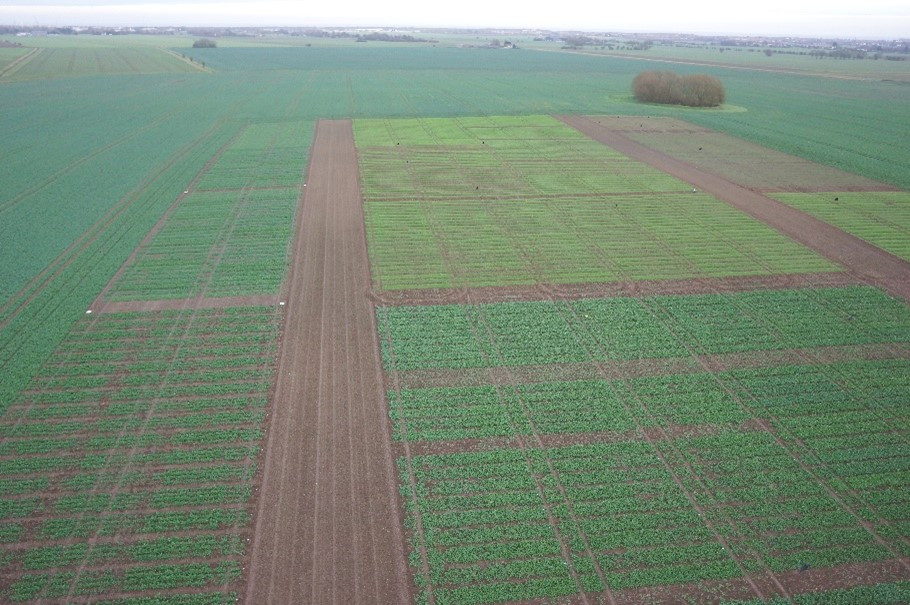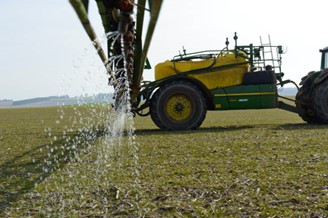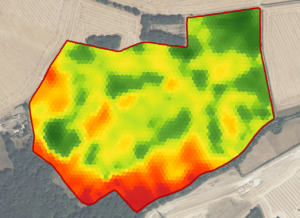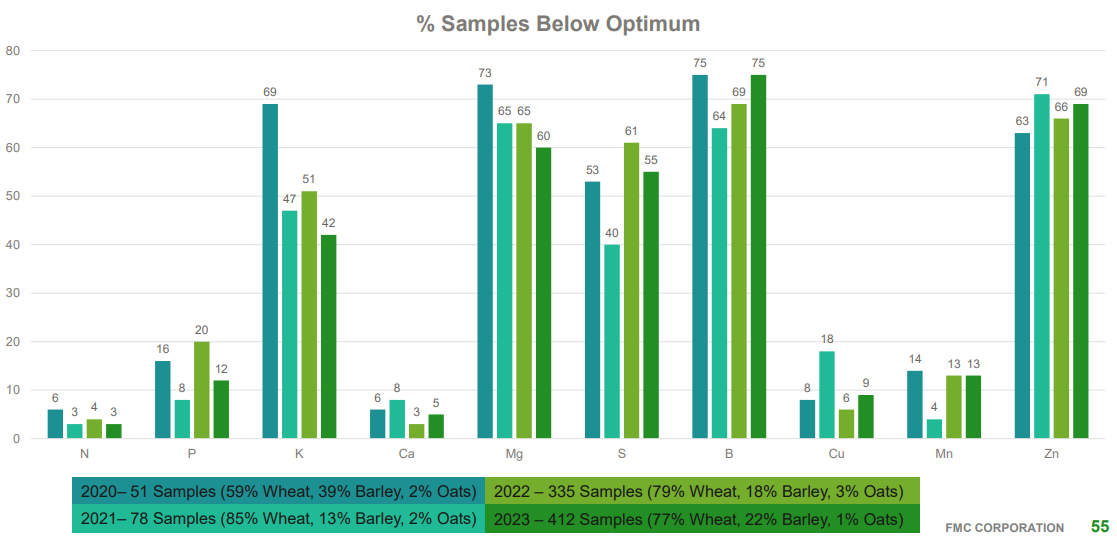Crop nutrition check – preparing for year ahead
Following on from a previous blog about early nutrition strategies, unfortunately due to continued wet weather there has been limited opportunity to complete many field applications. For some, this has been very 'stop/start'. For others, it's been absolutely impossible to get out in the field.
Many of you will be looking for guidance on how to manage the impacts this is having on farm. Let's look at some pointers on how to keep an eye on crop nutrient health as we enter into a period of peak applications and big biomass growth.
Soil conditions
Earlier this year before soil temperatures started to increase, we looked at soil nitrogen levels at our trial sites. Following excess winter rainfall, the conditions indicated that soils have potentially dropped a whole soil nitrogen supply (SNS) index level.
So, what does this mean for nitrogen recommendations?
It shouldn't change individual nitrogen applications, but the total planned nitrogen for a field or crop will be influenced. In actual fertiliser planning terms, this is likely to increase the total nitrogen rate by 30kg/ha N. However, this will vary based on your own farm inputs, soils and systems.
Before we dive into spring considerations, we need to be mindful that as soil temperatures increase and autumn planted crops rapidly move through growth stages, crops will naturally move through growth cycles quicker to maintain their natural flowering and ripening timings.
It's likely your nitrogen application timings and rates have been interrupted due to ground conditions and earlier advice around reduced rates and more splits hasn't been possible to achieve. Therefore, you've likely had to revert back to typical first application rate volumes where possible. In some circumstances where ground conditions have delayed things further, the crop nutrient demand is greater, so nitrogen rates have been above typical first rates.
These two factors - rapidly growing crops and interrupted fertiliser programmes - mean we need to keep an eye on the next application timing in order to support crop growth and maximize efficiency of applied nutrient.
Our recommendations
We often talk about the impacts of excess winter rainfall as leaching on nitrogen and sulphur.
Sulphur will certainly have leached, exactly like we have seen with nitrogen this year. Please note that potassium is also at risk, especially on lighter soils. Although phosphate doesn't leach, it has most certainly left the field through soil erosion run off as it binds to soil particles.
Don't forget about fresh potassium applied in the spring - daily demand during this period can be as much as 10kg/ha/day. If potassium has moved down the soil profile, the restricted root profile may not be able to access this.
Source: Potash Development Association
There has been an understandable priority on nitrogen application over other fertilisers, but P and K must not be overlooked. Remember, autumn/winter crops have likely had their root system restricted due to the wet winter, so fresh nutrient this spring will be vital. SOYL's nutrient mapping service provides an accurate assessment of P, K, Mg & pH which allows you to optimise fresh nutrient to areas where they may be limited.
In addition to fresh applied nutrients, the use of IntraCrop's Status (MTU® + pidolic acid) to help overcome some of the issues we are experiencing in winter cereals is a good addition. In replicated trials conducted over the last three years, Status has shown significant uplift in root mass and has improved nitrogen use efficiency by increasing carbon assimilation which must be balanced by nitrogen uptake. In ideal conditions, while stem growth can be 10% above the ground, with MTU this can be as much as 20% when looking at the roots but in conditions of stress, additional root growth can be as high as 40%.
Monitoring your crops
We know how valuable it is to understand exactly what your crops want and when. There are a few ways you can determine this and monitor your crops to ensure adequate nutrition.
Firstly, you could measure biomass and use the data captured to adjust nitrogen rates based on crop demand. This was covered in a blog from SOYL technical manager, Simon Griffin and knowledge exchange manager, Michelle Nuttall following our 2023 variable rate nitrogen trial results. They demonstrated a 9% increase in nitrogen use efficiency and a 0.32tn/ha yield increase when using variable rate nitrogen over flat rates.
Secondly, you might opt for hand-held devices, such as the YARA N-Tester BT, to measure chlorophyll content and corelate this against known nitrogen rate or demand. Although a great tool for monitoring nitrogen levels and receiving nitrogen recommendations, it's worth noting that it's not just nitrogen that is managing and maintaining chlorophyll plant content in the leaves. This means the YARA N-Tester BT could pick up a low chlorophyll content that isn't actually anything to do with nitrogen at all.
If you want to be totally certain around the nutrient health of your crop, you could carry out strategic tissue or leaf analysis of the crop ahead of key application timings. This could reinforce a decision on product application, or ensure a more tailored approach to nutrition. The graph below shows how the Frontier (supported by FMC Agro) tissue testing trial results have performed throughout 2020 to 2023.
I always advise a tissue analysis protocol that includes multiple sampling before a spend decision is made. Try not to forget about the nutrients you are sampling for and their mobility within the plant too. Some nutrients are very mobile and others not so much, so their deficiency could show up in younger or older leaves.
Summary
Your overall nutrient management for this season will be dependent on the ability to adapt a nitrogen programme on timing and rate, backed up by accurate measurements of soil, leaf and biomass. This ensures inputs are justified and applications are as efficient as possible.
For more advice how to check your crop's nutrient health and what it may mean for your individual farm business, you can speak to your local Frontier representative or contact the nutrition team here.
As a subscriber, you’ll receive email alerts each time a new blog is published so you can always stay updated with the latest advice and insights from our experts









Comments